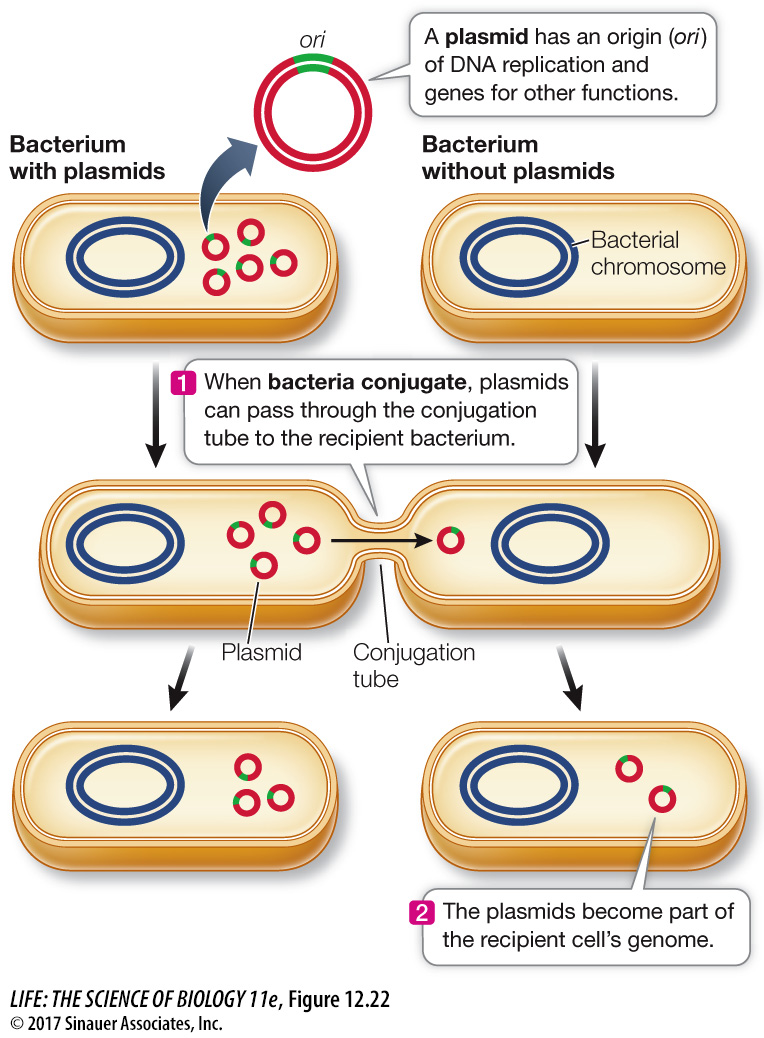Bacterial conjugation is controlled by plasmids
In addition to their main chromosome, many bacteria harbor additional smaller, circular DNA molecules called plasmids, which replicate independently of the main chromosome. *Plasmids typically contain at most a few dozen genes, which may fall into one of several categories:
263
Genes for unusual metabolic capacities. For example, bacteria carrying plasmids that confer the ability to break down hydrocarbons can be used to clean up oil spills.
Genes for antibiotic resistance. Plasmids carrying genes for antibiotic resistance are called R factors, and since they can be transferred between bacteria via conjugation, they are a major threat to human health.
Genes that confer the ability to make a sex pilus.
*connect the concepts As discussed in Key Concept 18.2, biologists can use plasmids as vectors to carry new DNA into other cells. This recombinant DNA technique may be used to produce many copies of a gene of interest, either for analysis or to produce the gene’s protein product in quantity.
During bacterial conjugation it is usually plasmids that are transferred from one bacterium to another (Figure 12.22). A single strand of the donor plasmid is transferred to the recipient, and then synthesis of a complementary DNA strand results in two complete copies of the plasmid, one in the donor and one in the recipient.
